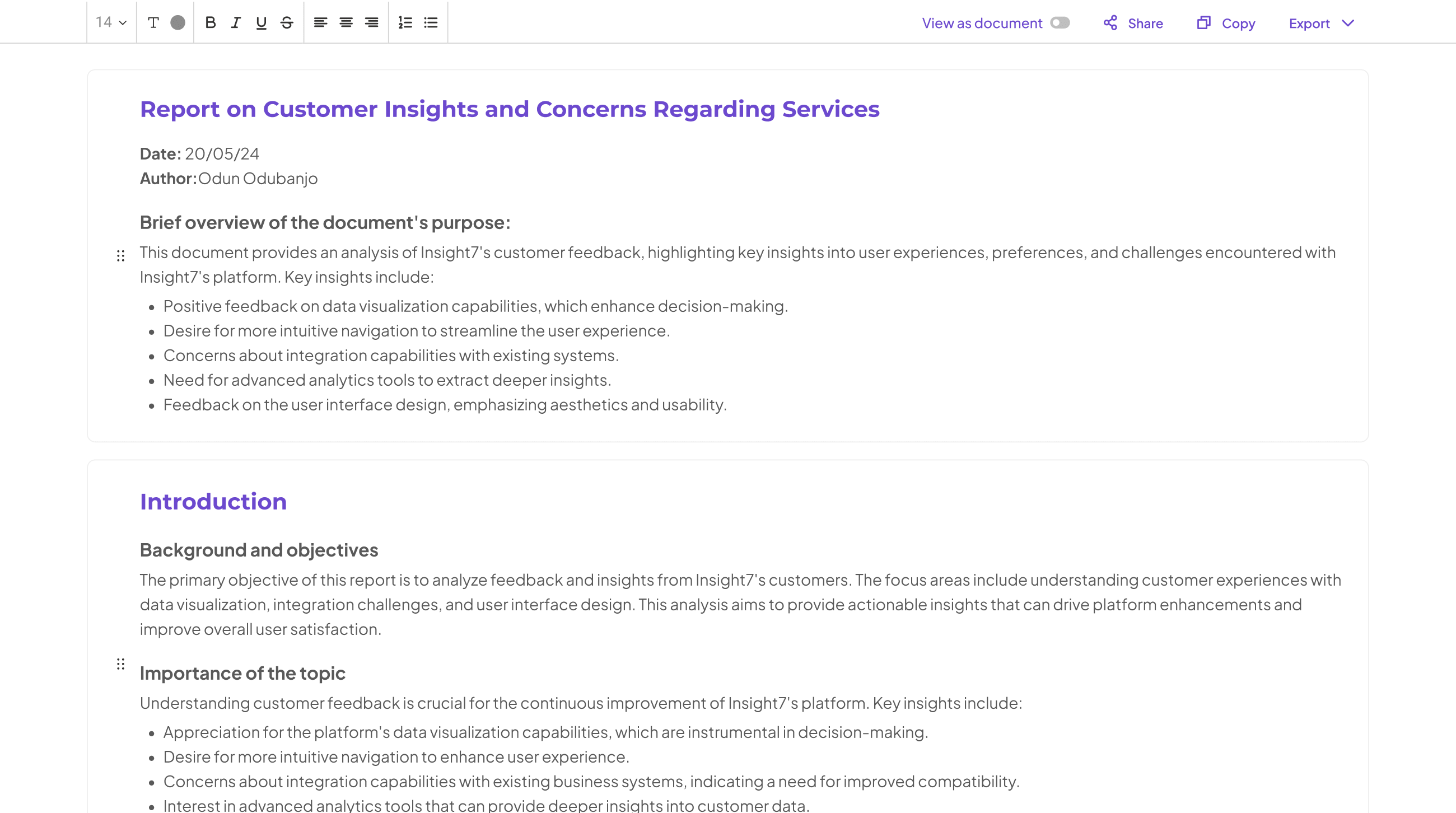Summary report writing is a crucial skill in market research, enabling professionals to distill complex data into actionable insights. These reports, typically presented in PowerPoint format, serve as the primary means of communicating findings to clients. A well-crafted summary report combines detailed analysis with high-level strategic recommendations, offering a comprehensive view of the research outcomes.
Standard market research reports often include various elements to enhance their effectiveness. Video and audio quotes can provide vivid, firsthand accounts from research participants, adding depth and authenticity to the findings. Supplementary materials, such as condensed versions of the main report, may also be included to cater to different stakeholder needs. By mastering the art of summary report writing, researchers can ensure their insights are clearly communicated and easily understood by their target audience.
Elements of Effective Summary Report Writing
Crafting an effective summary report requires a blend of analytical skills and clear communication. The key lies in distilling complex information into digestible insights while maintaining accuracy and relevance. A well-structured summary report typically begins with a concise overview of the main findings, followed by detailed sections that explore each key point.
To create impactful summary reports, focus on presenting data in a visually appealing manner. Use charts, graphs, and tables to illustrate trends and comparisons, making the information more accessible to readers. Additionally, incorporate actionable recommendations based on the data analysis, providing value beyond mere information presentation. Remember to tailor the language and depth of analysis to your target audience, ensuring the report meets their specific needs and expectations.
Key Components of Summary Report Writing
Market research reports often follow a standardized format, with PowerPoint presentations serving as the primary medium for delivering insights. These reports typically consist of two main components: detailed findings and high-level strategic insights. The detailed findings section delves into the specifics of the research, presenting data, analysis, and key observations. This part may include charts, graphs, and tables to visualize complex information effectively.
The high-level strategic insights component distills the most crucial takeaways for decision-makers. It focuses on actionable recommendations and broader implications for the client’s business. To enhance the impact of these reports, some researchers incorporate multimedia elements such as video or audio quotes from participants. This approach adds depth and authenticity to the findings, allowing stakeholders to hear directly from the target audience. Additionally, some firms offer condensed versions of their reports for quick reference, ensuring that key information is easily accessible to busy executives.
Common Mistakes in Summary Report Writing and How to Avoid Them
When crafting summary reports, many writers fall into common traps that can diminish the impact of their work. One frequent mistake is information overload, where authors include excessive details that obscure key findings. To avoid this, focus on distilling the most crucial insights and presenting them clearly.
Another pitfall is neglecting the executive summary, which should provide a concise overview of the entire report. Ensure your executive summary captures the main points and recommendations succinctly. Additionally, many writers struggle with proper data visualization, often using complex charts that confuse rather than clarify. Opt for simple, easy-to-understand visuals that support your narrative. By steering clear of these common errors and embracing best practices in summary report writing, you can create more effective and impactful documents that resonate with your audience.
Best Practices for Summary Report Writing
Creating effective summary reports is crucial for conveying research findings concisely. A well-crafted report should distill complex information into easily digestible formats. PowerPoint presentations are a popular choice, offering a visual medium to showcase key insights and strategic recommendations.
To enhance your summary report writing, consider incorporating multimedia elements. Video and audio quotes can bring participant feedback to life, adding depth to your findings. Supplement these with detailed written insights and high-level strategic observations. For clients who prefer brevity, develop condensed versions that highlight essential points. Remember, the goal is to present information clearly and engagingly, enabling stakeholders to grasp critical insights quickly and make informed decisions based on your research.
Tips and Techniques for Writing a Clear Summary Report
When crafting a clear summary report, it’s essential to distill complex information into a concise, easily digestible format. Start by identifying the key points and organizing them logically. Use headings and subheadings to create a clear structure, guiding readers through the main ideas effortlessly.
Incorporate visual elements like charts, graphs, or tables to present data more effectively. These visual aids can quickly convey trends or comparisons that might be cumbersome to explain in text alone. Remember to keep your language simple and jargon-free, ensuring that your summary report is accessible to a wide range of readers. By following these tips, you’ll create a summary report that effectively communicates your findings and recommendations, making it easier for decision-makers to act on the information provided.
Examples of Successful Summary Reports
Market research reports often come in various formats, but PowerPoint presentations remain a staple for many firms. These visual summaries offer a blend of detailed insights and high-level strategic recommendations. A typical report structure includes a main PowerPoint deck, supplemented with rich media elements like video or audio quotes from participants.
For clients seeking a comprehensive overview, the standard PowerPoint summary serves as the cornerstone. It combines in-depth analysis with actionable takeaways, allowing stakeholders to quickly grasp key findings. Some agencies also offer condensed versions of these reports, catering to different audience needs. While PowerPoint-based presentations dominate, the industry is exploring innovative ways to streamline the publishing process, potentially bridging the gap between raw insights and polished final drafts.
Conclusion on Summary Report Writing
In the realm of summary report writing, effective conclusion and presentation are crucial. The ability to synthesize information across multiple sources and present it cohesively can significantly impact user satisfaction. Modern tools offer features like data filtering, CSV exports, and PDF reports to streamline this process.




